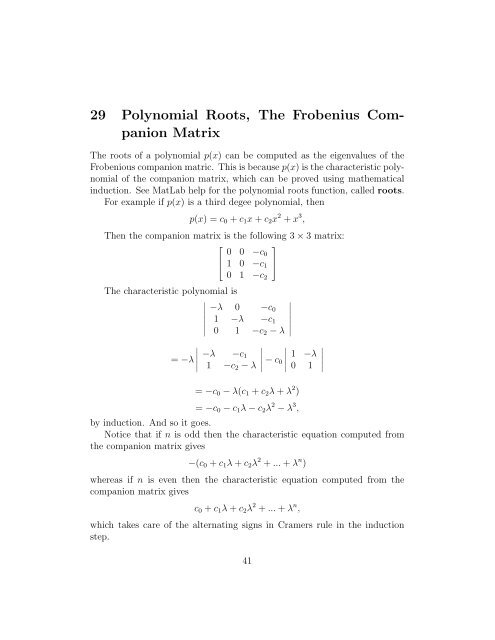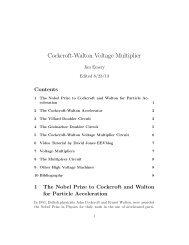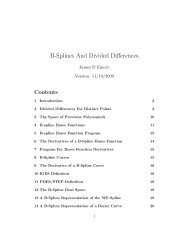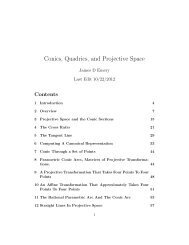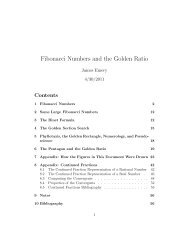Topics In Linear Algebra and Its Applications - STEM2
Topics In Linear Algebra and Its Applications - STEM2
Topics In Linear Algebra and Its Applications - STEM2
Create successful ePaper yourself
Turn your PDF publications into a flip-book with our unique Google optimized e-Paper software.
29 Polynomial Roots, The Frobenius CompanionMatrixThe roots of a polynomial p(x) can be computed as the eigenvalues of theFrobenious companion matric. This is because p(x) is the characteristic polynomialof the companion matrix, which can be proved using mathematicalinduction. See MatLab help for the polynomial roots function, called roots.For example if p(x) is a third degee polynomial, thenp(x) = c 0 + c 1 x + c 2 x 2 + x 3 ,Then the companion matrix is the following 3 × 3 matrix:⎡ ⎤0 0 −c 0⎢ ⎥⎣ 1 0 −c 1 ⎦0 1 −c 2The characteristic polynomial is−λ 0 −c 01 −λ −c 1∣ 0 1 −c 2 − λ ∣= −λ∣−λ −c 11 −c 2 − λ∣ − c 0∣= −c 0 − λ(c 1 + c 2 λ + λ 2 )= −c 0 − c 1 λ − c 2 λ 2 − λ 3 ,1 −λ0 1by induction. And so it goes.Notice that if n is odd then the characteristic equation computed fromthe companion matrix gives−(c 0 + c 1 λ + c 2 λ 2 + ... + λ n )whereas if n is even then the characteristic equation computed from thecompanion matrix givesc 0 + c 1 λ + c 2 λ 2 + ... + λ n ,which takes care of the alternating signs in Cramers rule in the inductionstep.41∣


